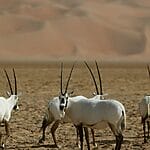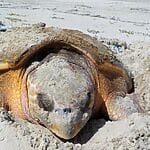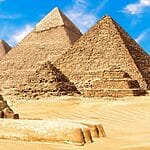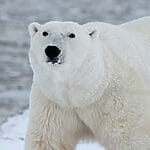9 Interesting Animals in Mongolia – You May Not Know
Mongolia is renowned for its nomadic culture, vast grasslands, and interesting animals in Mongolia. With 245 different species of interesting animals in Mongolia, documented and recorded. These species are an exciting range of animals to discover.
Beyond the well-known wild animals like the Mongolian horse and Bactrian camel, this country is home to numerous interesting animals in Mongolia. In this article, you will explore “10 Interesting Animals in Mongolia.”
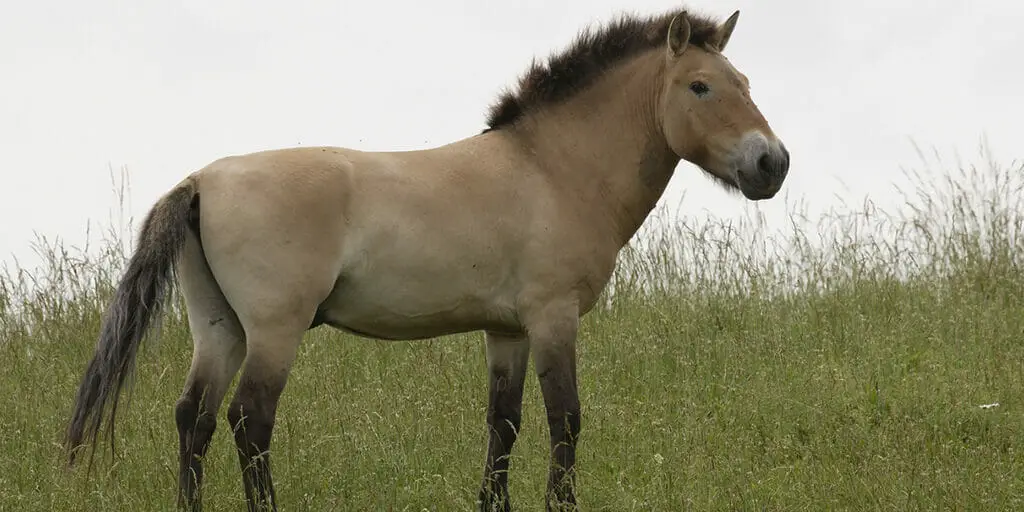
Mongolia is the world’s largest landlocked country. From the energetic Pallas’s Cat, with its expressive eyes, to the Gobi Jerboa of the desert, each rare species has evolved unique adaptations to survive the extreme conditions of Mongolia’s diverse habitats.
Let’s delve into the Saiga Antelope’s historical significance and explore Mongolia’s hidden interesting animals.
Places to see Interesting Animals in Mongolia – (Intriguing Animal Hotspots)
Hustai National Park
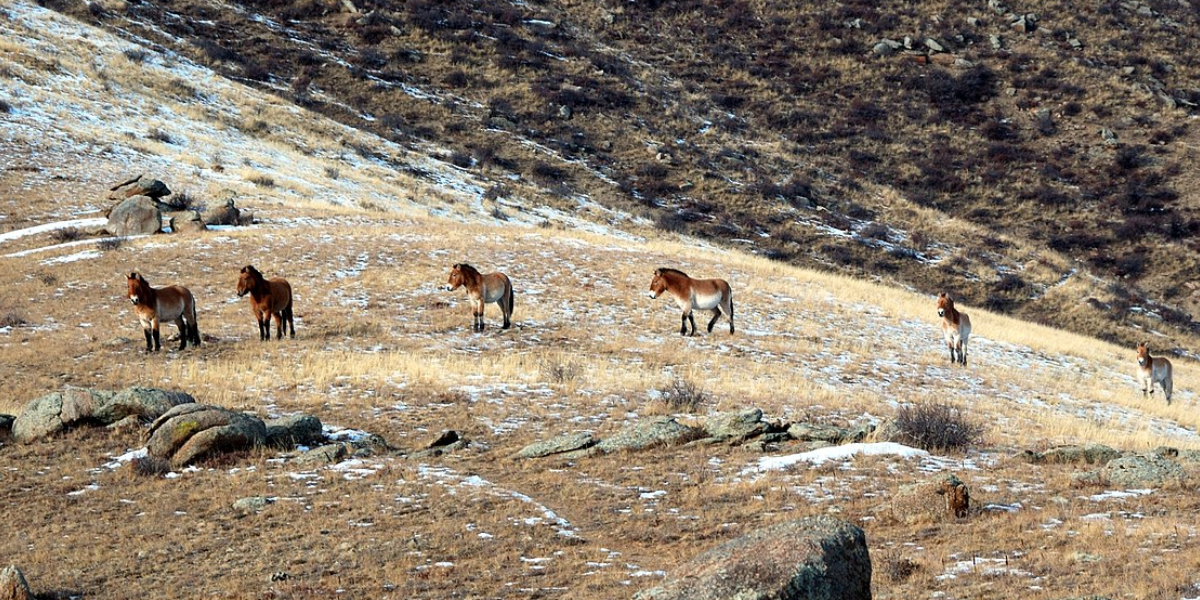
Hustai National Park is located in the centre of Mongolia. It is proof of the successful conservation of interesting animals in Mongolia.
The reintroduction of Przewalski’s horse, the last true wild horse species in the world. Hustai is also a haven for many wildlife and interesting animals in Mongolia.
Starting from the russet-coated Red Foxes walking in the grass, the graceful Mongolian Gazelles navigating the landscape, and the Argali Sheep, Asia’s largest wild sheep, all of them contribute to the park’s vibrant ecosystem.
Przewalski’s Horse
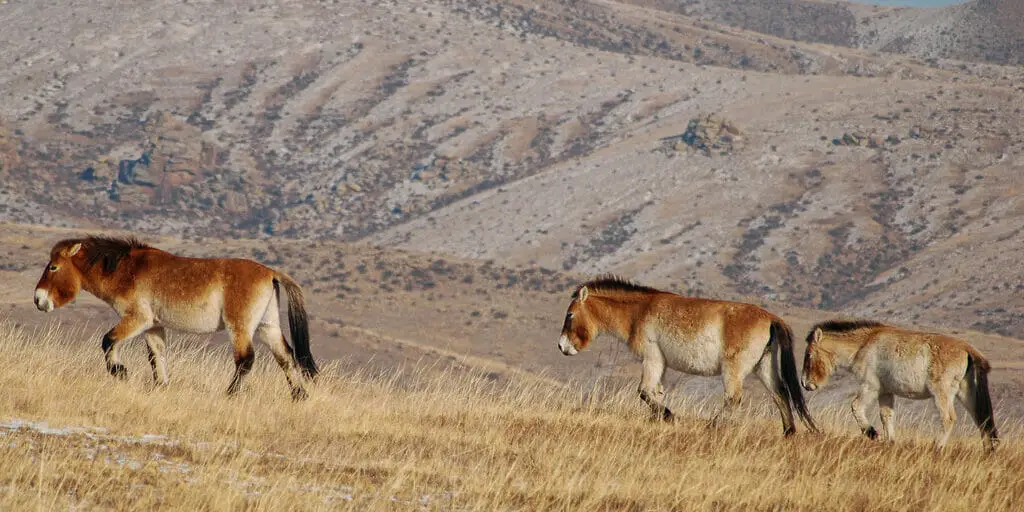
Przewalski’s horses, also known as “Mongolian wild horses”, are critically endangered animals found primarily in Mongolia.
Przewalski’s horses stand between 4.3 to 5 feet tall at the withers, measuring 7.25 to 8.5 feet in length and weighing 550 to 800 pounds. These horses may live up to 36 years of age. The Przewalski’s horses are closely related to the Botai horses genetically. These horses are considered as the first domesticated species.
Red Foxes

Red Foxes (Vulpes vulpes) are interesting animals in Mongolia, known for their adaptability to various environments. Despite their name, their fur can range from pale yellowish red to deep reddish brown.
Male Red foxes are slightly larger than females, and their distinctive appearance includes black lower legs and tails often tipped with black or white. They have keen senses of hearing and smell, detecting the squeak of a mouse from over 100 feet away.
Red foxes exhibit interesting mating habits. Red foxes play a vital role in their ecosystems by controlling the populations of prey like rodents and rabbits, as well as potentially dispersing seeds through their fruit consumption.
They possess remarkable hunting skills, often digging in dirt or snow to pursue prey and storing extra food under leaves, dirt, or snow for later use.
Mongolian Gazelles
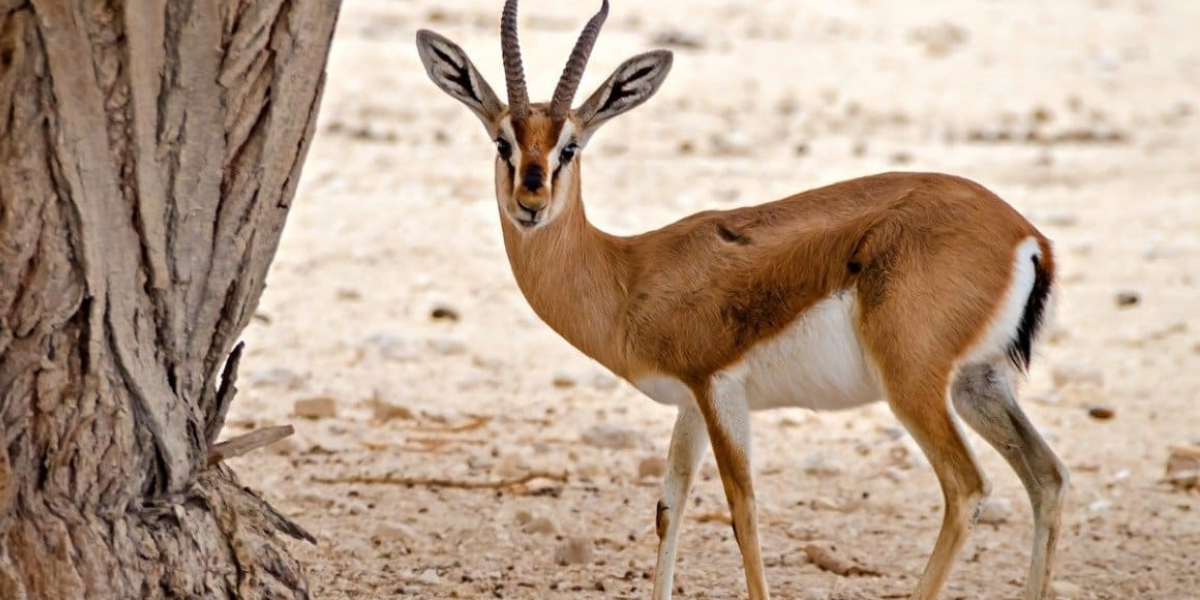
The Mongolian gazelle (Procapra gutturosa) is a captivating medium-sized antelope native to the Central Asian steppes. These gazelles have interesting behaviours and characteristics.
Mongolian gazelles have a remarkable population size, ranging from 500,000 to 1.5 million individuals. These antelopes are well-adapted to the diverse environments of Central Asia, particularly Mongolia.
Their appearance changes with the seasons. In summer, they have light brown coats with pinkish tones, while their fur becomes longer and paler in the winter. The heart-shaped white patch on their rump area is divided by a darker median line.
Did you know Around 100,000 individuals are killed annually due to illegal hunting, habitat loss, severe winters, and disease outbreaks. Currently classified as Least Concern on the IUCN Red List, these gazelles exhibit stable population numbers amidst challenges.
Gobi Desert: Variety of Desert Fauna
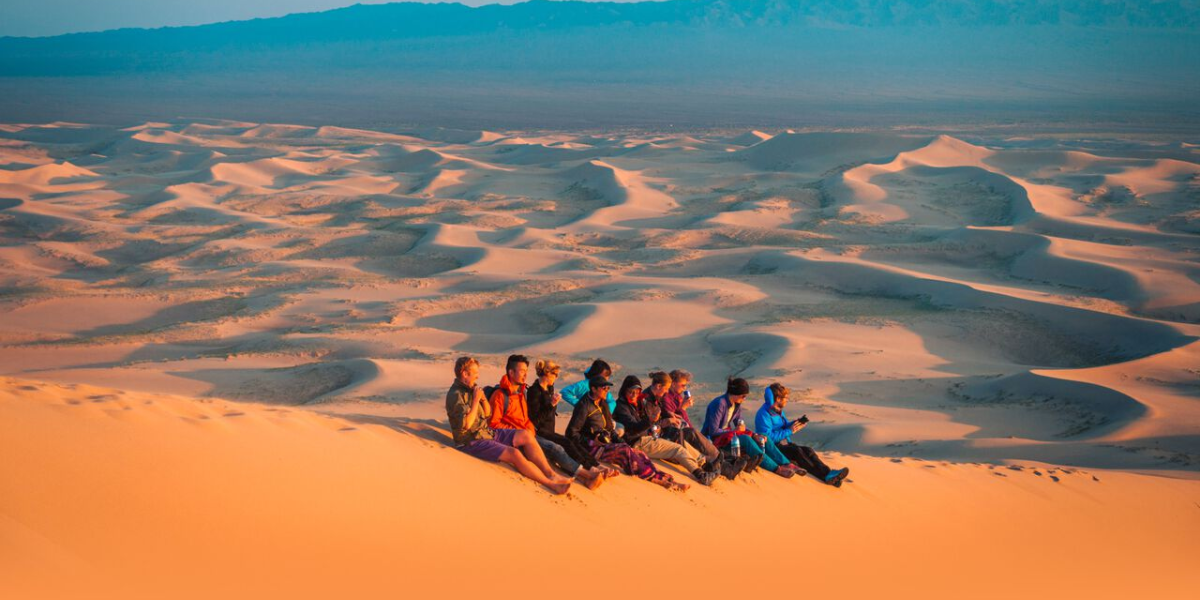
The Gobi Desert is known for its vast landscapes as it holds a secret treasure of unique and resilient wildlife that adapted to its harsh environment.
From the snow leopards to the charming jerboas, get ready to explore the captivating living creatures of the desert.
Can you imagine witnessing the mesmerizing dance of a horned viper as it navigates the sun-scorched terrain?
Often the agile Goitered Gazelle showcases its survival prowess against all odds and the rare Gobi bear, which is a symbol of nature’s ability to thrive in the harshest of conditions.
Discover Gobi’s Unique Wildlife: 8 Interesting Animals in Mongolia
Here are just a few examples of the remarkable animals that call the Gobi Desert home and have adapted to survive in the extreme temperatures.
Bactrian Camel
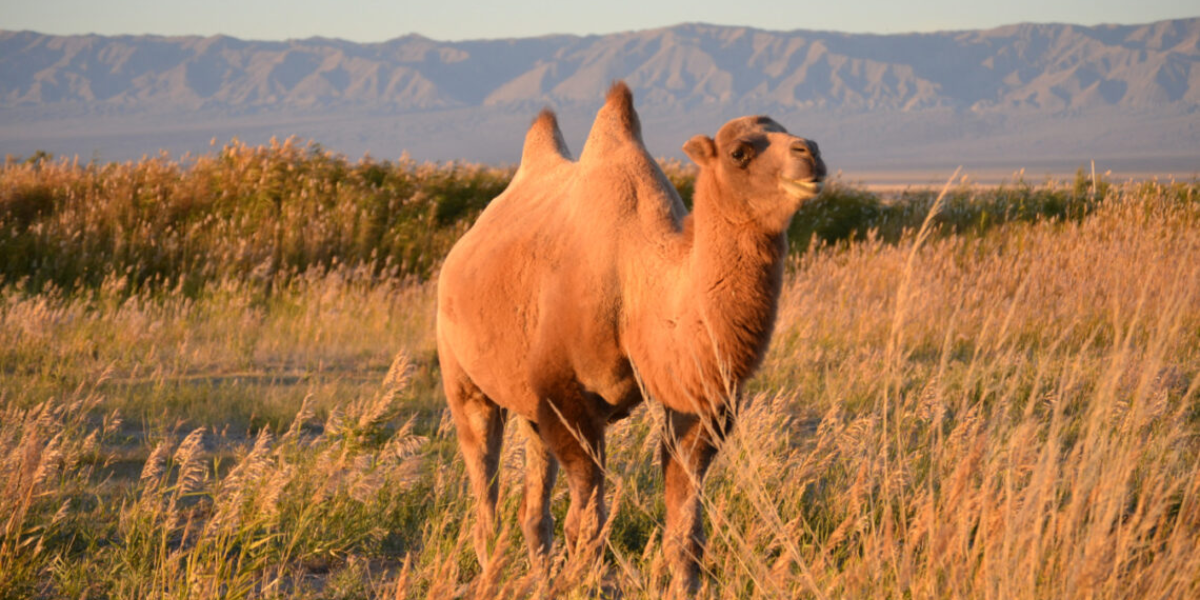
The Bactrian camels are interesting animals that dwell in the genus Camelus. There are two distinct species of camels, which are the Bactrian camel and the dromedary camel (Camelus dromedarius).
Around 90% of camels in the world are dromedary camels, renowned as Arabian camels. These camels are all domesticated. Meanwhile, the Bactrian camels exist in two form. The first one is wild, and the other one is domesticated.
This camel species weigh around 200 pounds and cover approximately 20 miles per day across harsh desert conditions. The Bactrian camel stands 10 to 11.5 feet in length, 5.2 to 5.9 feet tall at the shoulder, and weighs 990 to 1,100 pounds.
Camels are herbivores, and their diet comprises of grass, grains, wheat, and oats. Their tough but flexible lips enable them to consume vegetation that other mammals might avoid. Camels, like cows, are ruminants, regurgitating food for re-chewing.
They can survive over a week without water, relying on stored fat within their humps for energy. The size of their humps fluctuates based on food availability.
Unfortunately, the Bactrian camel is Critically Endangered animal, with only about 650 in China and 450 in Mongolia. Conservation efforts, like the Wild Camel Protection Foundation’s establishment of a natural reserve in China, aim to protect and preserve these critically endangered species.
Gobi Bear
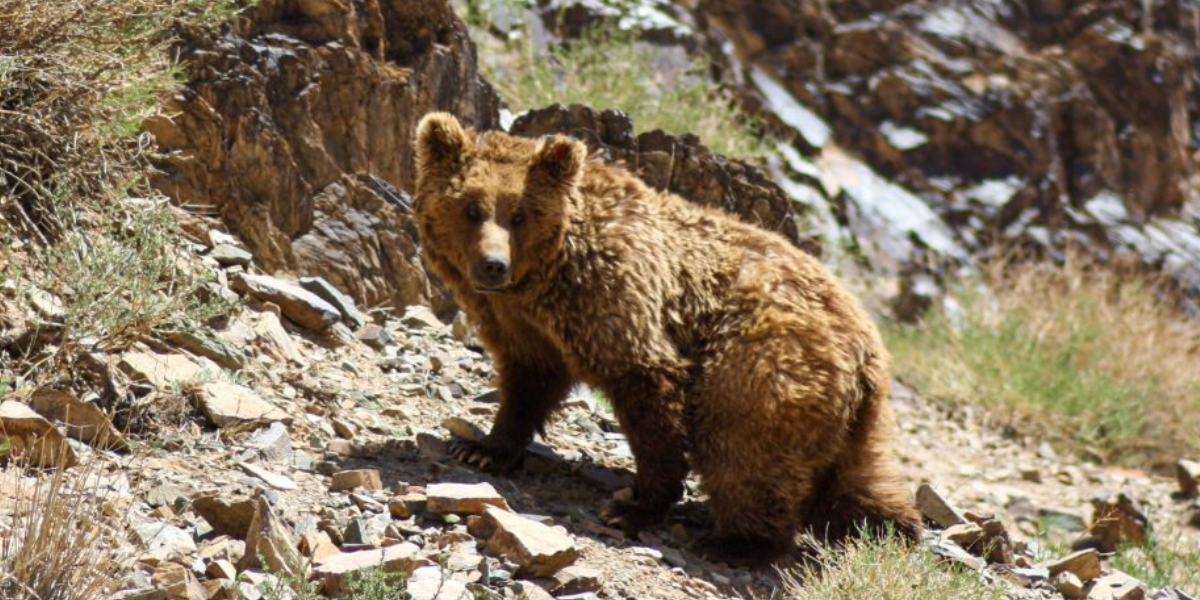
The Gobi bear is also known as Mazaalai in Mongolian. It is a distinct subspecies of the brown bear (Ursus arctos) residing within the challenging landscape of the Gobi Desert for the animals of Mongolia.
The Gobi bears are critically endangered according to the Mongolian Redbook of Endangered Species and IUCN standards. Recent studies have shown a promising increase in the bear population, with 51 bears documented in 2022, marking a significant rise from the previous estimate of 31 bears in 2017.
Gobi bears exhibit adaptations suited to their desert environment. They primarily feed on roots, berries, plants, and occasionally rodents, with only about 8% of their diet consisting of animal protein. These bears are smaller compared to other brown bear subspecies, with adult males weighing approximately 96.0–138.0 kg and females around 51.0–78.0 kg.
Gobi Jerboa
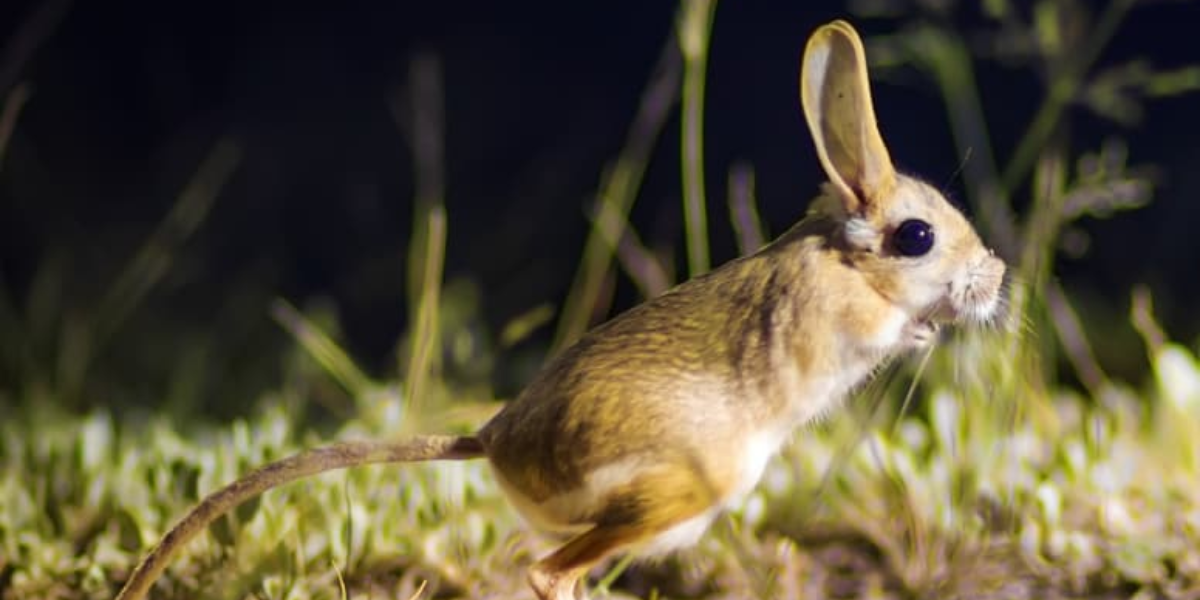
The Gobi Jerboa is an interesting animal found in the challenging environments of the Gobi and Sahara deserts. These nocturnal rodents belong to the Dipodinae family of “jumping rodents.”
They have a mouse or rat-like head and body, large sensory whiskers, owl-like eyes, squirrel-like ears, kangaroo-like back legs, and a disproportionately long, sometimes tufted tail.
Interestingly, jerboas are known for their incredible leaping abilities, reaching speeds of 15 to 16 miles per hour. During daylight hours, jerboas spend time in their burrows, which can range from simply 1 to 2 ft. long. They temporary shelters to complex 5 to 8 ft. deep burrows with multiple tunnels and chambers for hibernation, food storage, and nesting.
Saiga Antelope
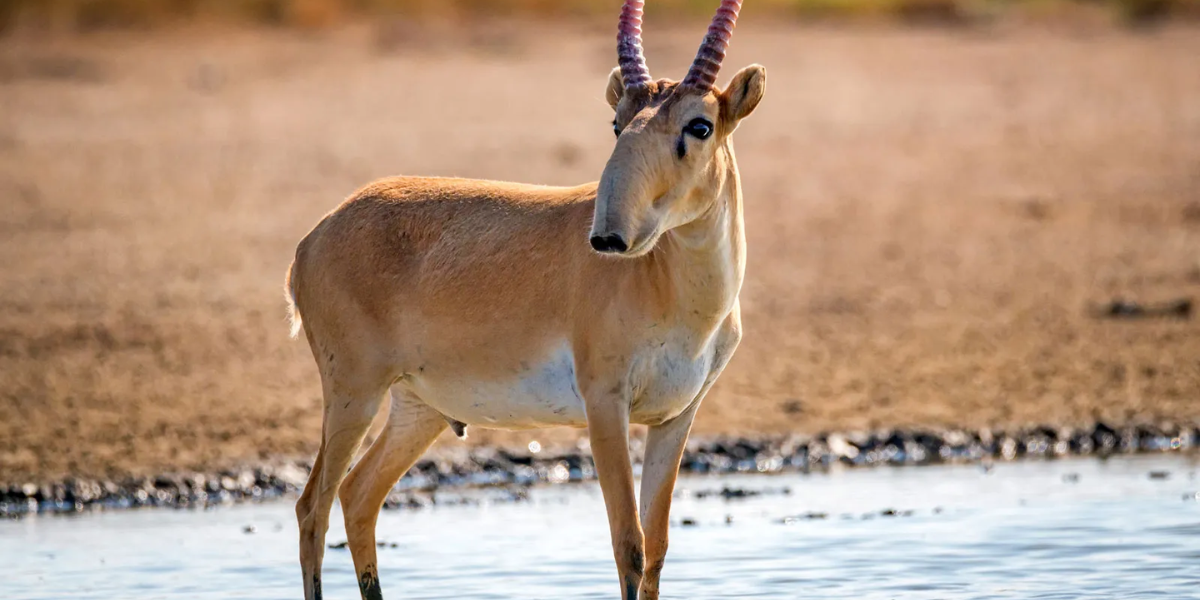
Saiga antelopes inhabit the dry steppes and semi-deserts of central Asia, particularly in Mongolia, Kazakhstan, and Kalmykia.
This species of antelopes have large, moveable noses that overhang their mouths. With this, they have striking waxy-coloured horns with ring-like ridges in males. They stand about 0.6 to 0.8 meters tall at the shoulder and are around 1 to 1.5 meters long. These antelopes have long, thin legs, a slightly robust body, and a short tail.
Their yellowish-red summer coat and thicker turns into a dull grey coat in winter. Saigas are herbivores, grazing on over a hundred plant species, including grasses, summer cypress, sagebrush, and lichens. The population of saiga antelope is listed as Critically Endangered and is now a threatened species due to poaching.
Argali Sheep
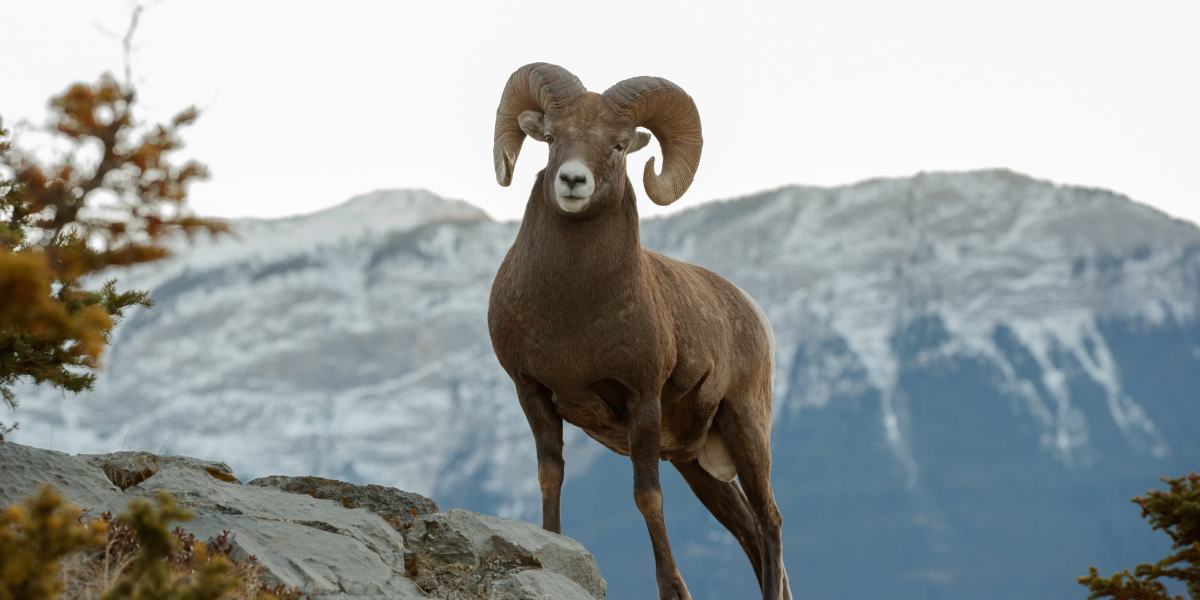
The Argali sheep is the largest species of wild goat. It is a threatened species, and one of the interesting animals in Mongolia, in the Altai Mountains region. They are mainly nocturnal and found in altitudes over 2600 ft. The adults are small, weighing just 17 kg at the max.
There are actually two different types of argali sheep in Mongolia, that are the High Altai Argali and the Gobi Argali.
Desert Hedgehog
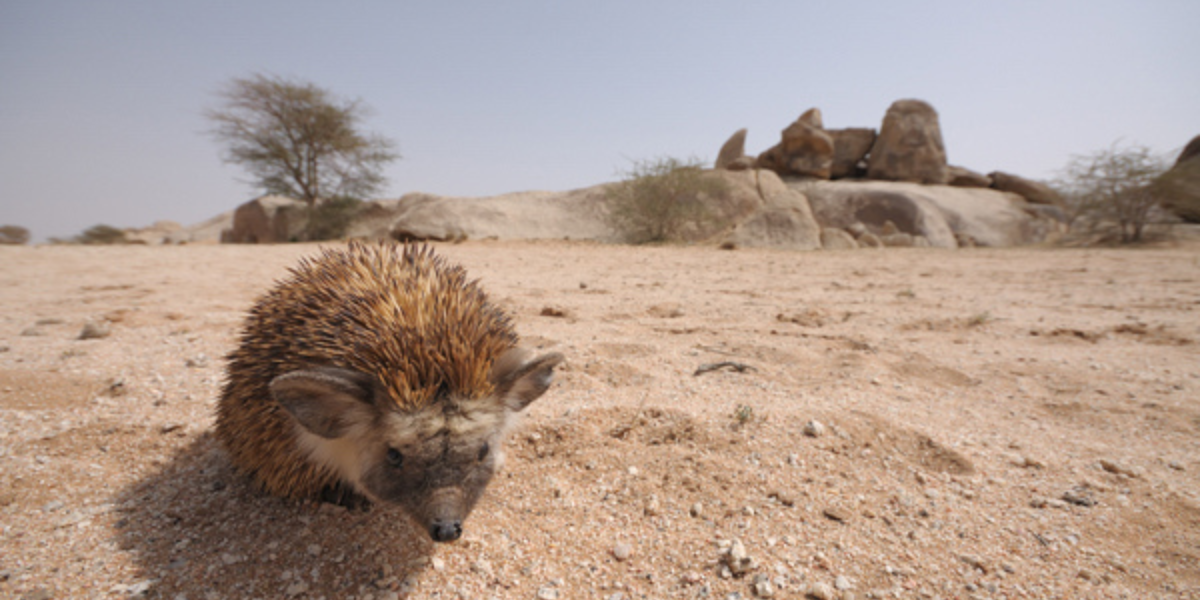
The Desert Hedgehog, scientifically known as Paraechinus aethiopicus. These are the smallest member of the hedgehog family and is found throughout arid desert regions in the Middle East and parts of Africa.
They have adapted to survive in these challenging environments, including deserts, dry steppes, oases, vegetated wadis, open woodlands, gardens, and cultivated areas.
Desert Hedgehogs are widely distributed across northern Africa and the Middle East, from Morocco and Mauritania to Egypt, Sudan, and the Arabian Peninsula.
These hedgehogs stand about 3-4 years in the wild and up to 10 years in captivity. They can be recognized by a distinct dark muzzle and a wide, spineless white band across their face.
Desert Hedgehog have an adaptive survival strategy against predators. Like they may first try to run from danger before curling into a spiky ball.
These nocturnal, solitary creatures are primarily insectivorous, although their diet can vary based on available food sources. They eat insects, small invertebrates, frogs, bird eggs, snakes, and even scorpions.
While the Desert Hedgehog is not globally threatened, desertification and road fatalities are potential risks to their populations. Furthermore, they are classified as the “Least Concern” on the IUCN red List.
Fun Facts: Desert hedgehogs have unique behaviors, like “self-anointing” with scented saliva on their spines when they encounter interesting scents.
Frequently Asked Questions
What is the rarest animal in Mongolia?
The Gobi bear is the rarest animal in Mongolia, as only an estimated 30-50 Gobi bears are left in the wild.
What animal is only found in Mongolia?
Few animals that are only native to Mongolia are Przewalski’s horse, Mongolian wild ass, Gobi bear, Saiga antelope.
What exotic animals are in Mongolia?
Some exotic animals that are found in Mongolia are Siberian ibex, Argali sheep, Snow leopard, Black-tailed gazelle, Przewalski’s horse, Gobi bear, Mongolian wild ass.
What are the most popular animals in Mongolia?
Some of the most popular animals that are found in Mongolia include Przewalski’s horse, Mongolian wild ass, Snow leopard, and Siberian ibex.

